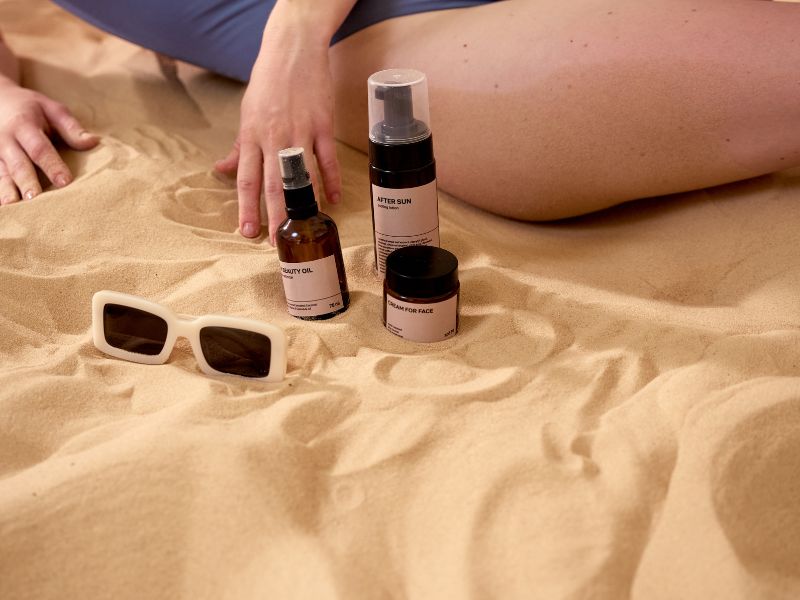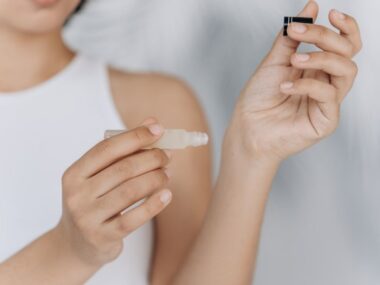The sun can be both a source of warmth and essential vitamin D, yet it also poses a serious risk to delicate baby skin. Protecting infants from sun exposure is critical because their skin is much more susceptible to the harmful effects of UV radiation. For parents and caregivers, understanding when and how to use sunscreen safely on babies is essential to safeguarding their health.
Sunscreen And Babies
In this guide, we’ll cover everything you need to know about sunscreen and other sun protection methods for babies. From learning about the unique needs of baby skin to choosing the right sunscreen product and applying it safely, we’ll explore how you can protect your little one from potential sun damage.
Understanding Baby Skin Sensitivity to the Sun
Babies have extremely delicate skin, which is about 20–30% thinner than adult skin. Their skin lacks a mature melanin production system, meaning it has a limited natural defense against ultraviolet (UV) radiation. Additionally, baby skin is more prone to absorbing chemicals from topical products, which can increase the risk of irritation or other adverse effects.
Prolonged sun exposure in infants can lead to sunburn, dehydration, and even an increased risk of skin cancer later in life. Given their increased susceptibility, protecting babies from direct sun exposure, especially during peak UV hours (10 a.m. to 4 p.m.), is critical.
When Can You Start Using Sunscreen on Babies?
According to the American Academy of Pediatrics (AAP), sunscreen use is generally recommended for babies starting at six months of age. Before this age, sunscreen is not typically advised due to the sensitivity and absorbency of infant skin. Instead, for infants under six months, parents are encouraged to use physical barriers like clothing, hats, and shade to shield their baby from the sun.
Once babies reach six months, sunscreen can be applied to areas that remain exposed, such as the face and hands. However, caregivers should still prioritize other forms of sun protection whenever possible.
Broad-Spectrum, SPF, and UV Protection
Sunscreen works by either reflecting or absorbing UV radiation, thereby preventing it from penetrating the skin. There are two types of UV rays: UVA, which penetrates deeply into the skin and contributes to aging and skin cancer, and UVB, which causes sunburn.
For effective protection, it’s essential to use a broad-spectrum sunscreen that guards against both UVA and UVB rays. Sunscreen products are labeled with SPF (sun protection factor) ratings; for babies, an SPF of 30 to 50 is generally recommended to provide adequate protection without adding unnecessary chemicals to their skin.
Types of Sunscreens for Babies
When choosing sunscreen for a baby, physical (or mineral) sunscreens are usually the safest option. These contain zinc oxide or titanium dioxide, which sit on the skin’s surface and deflect UV rays rather than absorbing them into the skin. Chemical sunscreens, on the other hand, contain compounds that absorb UV radiation, which can sometimes irritate baby skin.
Physical sunscreens are often recommended for infants and young children because they are less likely to cause irritation and start working immediately upon application. They also have a lower risk of being absorbed into the skin, making them a preferred choice for baby sunscreen.
Key Ingredients to Look for (and Avoid) in Baby Sunscreens
When choosing a sunscreen for babies, it’s important to select one with safe, non-toxic ingredients. Look for products containing zinc oxide or titanium dioxide, as these are both effective and gentle on the skin.
Avoid sunscreens with ingredients like oxybenzone and octinoxate, which have been associated with hormonal disruptions and are harmful to marine life. Fragrance-free, hypoallergenic options are best for sensitive baby skin, as added perfumes and preservatives can lead to irritation.
Tips for Safely Applying Sunscreen on Babies
To ensure effective protection, apply a generous amount of sunscreen to all exposed areas of your baby’s skin. For infants, focus on the face, hands, and any other exposed parts, but avoid applying near the eyes. Reapply sunscreen every two hours and after swimming or sweating.
Use a small amount at first to test for any skin reactions, especially if your baby has sensitive skin. Remember that even waterproof sunscreens should be reapplied after water exposure to ensure continuous protection.
Additional Sun Protection Measures Beyond Sunscreen
In addition to sunscreen, other protective measures can help safeguard your baby from the sun. Light, breathable clothing with a tight weave, wide-brimmed hats, and baby sunglasses can protect your child’s face, neck, and eyes. Whenever possible, seek shade or use a stroller with a sunshade to minimize direct exposure.
Hydration is also essential; hot weather can cause dehydration, so make sure your baby is well-hydrated if spending time outdoors.
Common Myths and Misconceptions about Sunscreen and Babies
There are several misconceptions surrounding sunscreen use for babies. One common myth is that sunscreen is unnecessary on cloudy days; however, up to 80% of UV rays can penetrate clouds. Another misconception is that sunscreen is only necessary during outdoor play, but UV rays can reflect off surfaces like water, sand, and even grass, increasing exposure.
Additionally, while some parents believe that natural or organic sunscreens are always better, it’s essential to ensure these products are broad-spectrum and contain safe, effective ingredients like zinc oxide.
How to Choose the Best Sunscreen Brand for Your Baby
When selecting a sunscreen for your baby, look for reputable brands with hypoallergenic, fragrance-free options. Brands like CeraVe, Blue Lizard, and Thinkbaby offer sunscreens specifically formulated for sensitive skin, with mineral-based ingredients that provide broad-spectrum protection. Read labels carefully and choose products certified for baby use to ensure safety and effectiveness.
Conclusion
Sunscreen is a key component in protecting babies from harmful UV radiation, especially as they grow and spend more time outdoors. By choosing the right sunscreen, following application guidelines, and implementing additional sun protection measures, parents can help ensure their baby’s skin remains safe from the potential damage caused by sun exposure. Remember, your baby’s health is a top priority, and taking the right steps now can have lasting benefits for their skin health as they grow.






